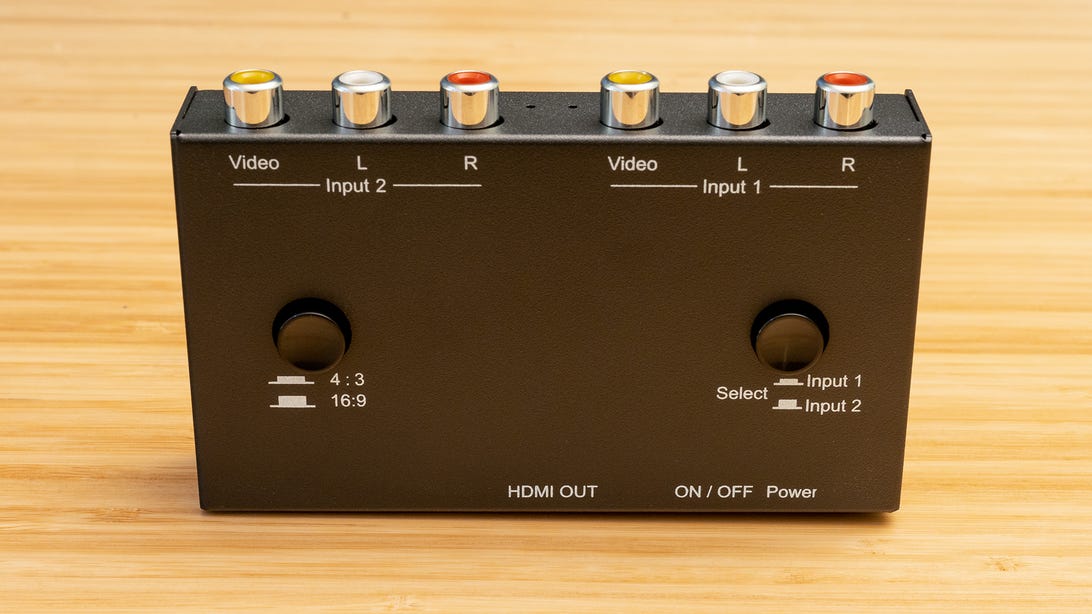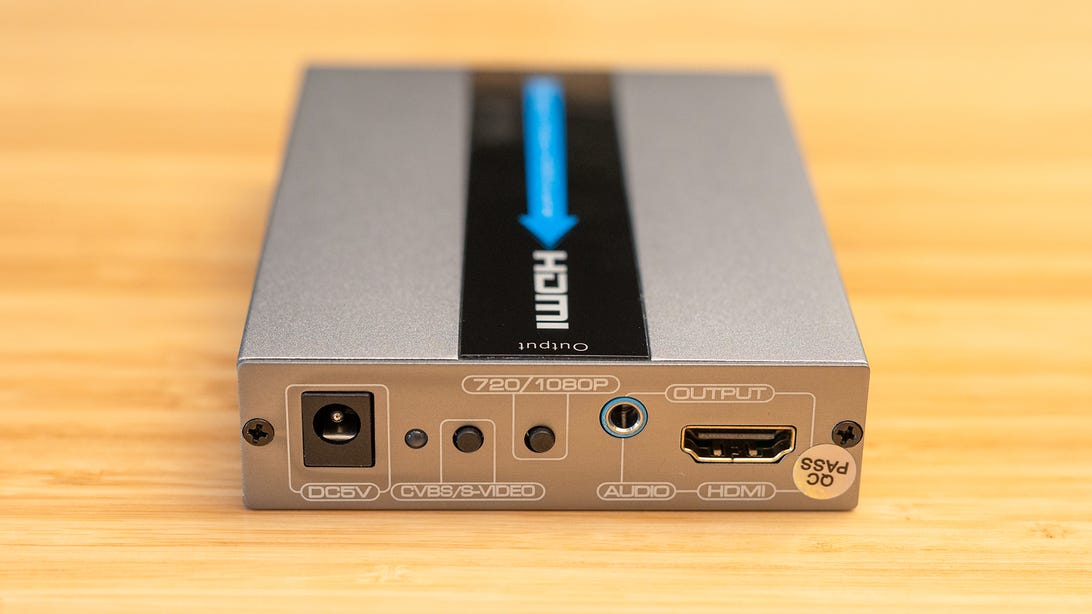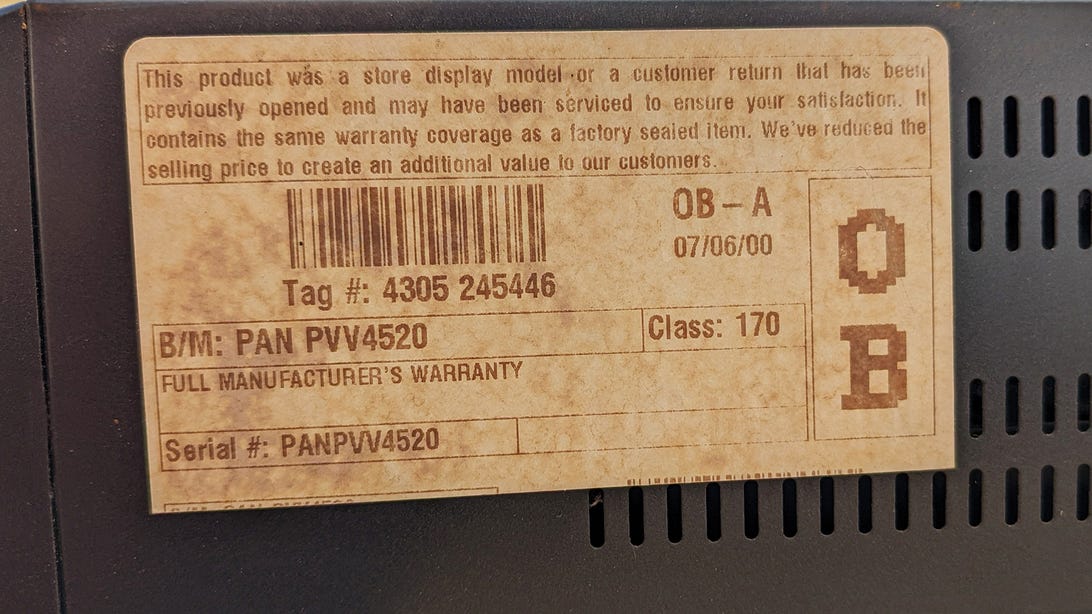22How to Connect a VCR to Your New TV – CNET [CNET]


Want to watch some old family movies on VCR? Having a craving for some GoldenEye on N64? Maybe you found some LaserDiscs at a yard sale — they may look like huge CDs, but they’re analog! Then you notice that your shiny new TV doesn’t have the right inputs.
Many modern TVs have, at best, one analog input. Often they don’t have any. Fortunately, there are a ton of analog RCA-to-HDMI converters on the market, and they’re extremely cheap. The most expensive one I tested, which includes the fancy-for-the-90s S-Video connection, was only $40.
Here’s a look at what you need to get converting composite to HDMI.
Who this is for

These adapters are solely to connect and play older, analog video sources to your modern TV. With one exception which I’ll discuss in a moment, that means the yellow, red, and white RCA connectors. So that means VCRs, the Nintendo Wii, older game consoles like the GameCube, LaserDisc and many camcorders. Anything with composite video outputs.
The devices below convert these analog signals to HDMI, the ubiquitous connection on all modern TVs. These converters won’t let you record those signals, only watch them on your TV. Even if your laptop has an HDMI connection, that is an output only. It cannot accept video to record. There are devices that do that, but that’s not these.
These are not component video converters, the red, green and blue connections found mostly on DVD players and early Blu-ray players. However, there aren’t many products where you’d need to convert component to HDMI. DVDs, for instance, are playable on Blu-ray and Ultra HD Blu-ray players. Component-to-HDMI converters exist, but I didn’t test them for this guide since they’re more niche.
These are also not HDMI to RCA, aka taking an HD source to connect to an older, analog TV. Those exist but aren’t what I’m testing here, nor will these work for that.

All the models I tested could convert to 720p or 1080p, though you’re unlikely to see a difference.
Geoff Morrison/CNETAll of these adapters will upconvert the standard definition signals to HD, but as I’ll discuss, don’t get your hopes up. Your TV will do this automatically, and old video gear is never going to look as good as any modern video source. VHS, for example, has a resolution that is, at best, roughly 320×480. Your 4K TV has 3,840 x 2,160, or nearly 54 times VHS. Unlike what movies and TV shows tell you, you can’t just “enhance” this to look like HD or 4K. Your nostalgia is going to remember far better picture quality than the reality of what we had pre-HD. Vastly smaller TVs helped reinforced this impression as well.
In addition to composite I also tested one model that has S-Video. S-Video was found on LaserDisc players and a handful of other products. It was better than composite, worse than component. Unless you’re sure you need S-Video, composite will work just fine.
RCA-to-HDMI converters
I was able to find an extremely dusty and slightly rusty VCR hiding in the back of my garage. It even still had the Circuit City Open Box sticker from when I first bought it. I also had, I have no idea why, two paper bags full of VHS tapes that somehow made the trip from college in upstate New York, through two apartments in LA, and finally, totally forgotten in the back of a closet in my house. This turns out to be surprisingly relevant, as you’ll soon see.

I should clean my garage more often.
Geoff Morrison/CNETA few important things to mention. Old video gear was 4×3, aka squarish. To watch on a modern 16×9 TV you’ll need to find the aspect ratio adjustment on your TV. This might be on the remote, or it might be in the menu. Depending on the age of your TV, it might only let you adjust the aspect ratio with 720p and not 1080, but all the converters I tested have that resolution adjustment. One converter I tested, the Azduou, has an aspect ratio button. I doubt you’ll need it, though.
None of these do a particularly good job of deinterlacing — taking out the jaggies and black lines — but that’s the least of your problems with old video content. It’s never going to look as good as HD.
There are countless more options available online. Chances are, if it looks the same as one you see here, it almost certainly is.
Striking gold. No… striking diamonds!
During testing, this project took an unexpected turn. On an unlabeled VHS I found a short clip of my childhood dog, Kodi. I didn’t think any video of him existed. He died long before cell phones or even widespread digital photography, so I only have some transferred-film photos and my own memories. What an unexpected joy. What an absolute gift.
Currently watching 22-year-old 8mm recordings on VHS via a 22 year old VCR connected via HDMI converter dongle to a 4K laser projector on a 100-inch screen.
Technology never dies. It just gets extremely dusty and slightly rusted in my garage.
— Geoffrey Morrison (@TechWriterGeoff) February 20, 2022
Then it got even wilder. I tweeted about finding Kodi’s video and one of my followers said she was digitizing some old VHS tapes that night as well. She sent me the link… and it was a long interview of a friend-of-a-friend who passed a few years ago. The internet is a small place. I sent my friend the link and he was beyond delighted to see his old pal again.
Which is to say, these converters are absolutely worth their price. Whether it’s for a burst of nostalgia endorphins from a favorite old game, or seeing someone you loved one more time. If you’ve got the old gear, definitely worth connecting them up. Even if just for a night.
As well as covering TV and other display tech, Geoff does photo tours of cool museums and locations around the world, including nuclear submarines, massive aircraft carriers, medieval castles, epic 10,000 mile road trips, and more. Check out Tech Treks for all his tours and adventures.
He wrote a bestselling sci-fi novel about city-size submarines, along with a sequel. You can follow his adventures on Instagram and his YouTube channel.

![22how-to-connect-a-vcr-to-your-new-tv-–-cnet-[cnet]](https://i0.wp.com/upmytech.com/wp-content/uploads/2022/02/51764-22how-to-connect-a-vcr-to-your-new-tv-cnet-cnet.jpg?resize=800%2C445&ssl=1)
![the-opening-hour-of-resident-evil-4-remake’s-separate-ways-dlc-|-game-informer-live-[game-informer]](https://i0.wp.com/upmytech.com/wp-content/uploads/2023/09/143561-the-opening-hour-of-resident-evil-4-remakes-separate-ways-dlc-game-informer-live-game-informer.jpg?resize=390%2C205&ssl=1)
![facebook,-google,-tiktok-and-twitter-commit-to-tackling-abuse-of-women-online-–-cnet-[cnet]](https://i0.wp.com/upmytech.com/wp-content/uploads/2021/07/33900-facebook-google-tiktok-and-twitter-commit-to-tackling-abuse-of-women-online-cnet-cnet.jpg?resize=390%2C205&ssl=1)